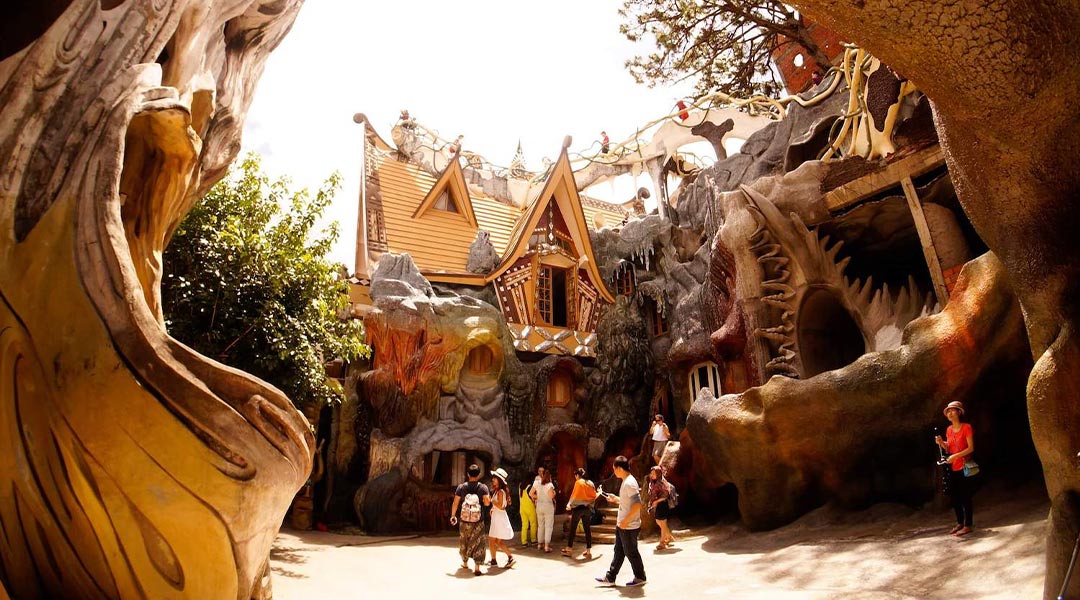
Imagination and Emotion Run Free in Vietnam’s Crazy House
Crazy House: the culmination of an artist’s life
The architect, Dr. Dang Viet Nga, began construction on Crazy House in 1990, and the bulk of the structure was completed over a period of ten years. Dr. Dang considers the house as the culmination of her life’s experiences, and a house that contains so many unexpected twists, turns, spaces, and decorative elements must represent a very rich and intriguing life indeed.
After designing several government projects, Dr. Dang was eager to depart from conservative, practical designs to pursue her own aesthetic sensibility. “Every person thirsts for independence and freedom,” she said “I therefore give expression to such ideas.”

Back to nature
This aesthetic sensibility turns out to be one that is focused on the beauty of nature. Set in the lush landscape of Dalat, Crazy House is a wild tangle of rooms, paths and passages that each have a nature theme. The volumes are connected by paths set inside giant concrete tree branches, which could take the visitor to the roof, or the ocean room with its paintings of sea creatures.
At night, the building’s tree-trunk shaped volumes gleam in the darkness with forms that seem not quite tame. The unpredictable and the unknown are concepts that are as much a part of nature as its beauty and warmth. Crazy House also serves as a hotel, but forgoes many of the appliances that are de rigueur in most hospitality buildings, such as televisions and air-conditioning. Trimming the technology down to the essentials brings the focus back to nature.
Expressionism in the 21st century
The expressionism movement in architecture (1910-2924) was born in the same era as other modernist styles. However, it has a completely different sensibility. Expressionist structures were often sculptural and distorted, emphasizing stylistic and emotional expression over functionality and tradition.
These features of expressionism are present in Crazy House:
- Represents inner experiences and emotions.
- Draws on forms in nature, such as oceans, forests, caves and rock formations.
- Inspired as much by Eastern art and architecture as Western.
- Distortion of form for artistic effect.
These values run counter to what is currently considered to be in good taste: minimalism, functionality, and practicality. The aesthetic excess of Crazy House will not appeal to everyone. But this daring expression of emotional values in architecture is what sets the building apart, and can perhaps inspire others to make some space for the long-forgotten style of expressionist architecture.
All images courtesy of crazyhouse.vn











